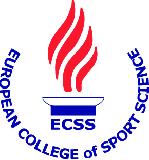Germany, Feb 01, 2013: ECSS YIA, Today it is 2 years ago that Sam Shepherd and Matthew Cocks were working on their abstracts for the 16th annual Congress of the ECSS in Liverpool, UK. Both abstracts were accepted for oral presentations in the Young Investigator Award competition and did very well. Matthew Cocks won the 2nd price and Sam Shepherd received a special recommendation of the jury in the plenary YIA session as the quality of his research was judged to be equal. However, as the data were generated in one very large study, Sam was the unlucky one to be excluded from the final part of the YIA competition.
The supervisor of these former PhD students is Professor Anton Wagenmakers, the Chair of the Scientific Board of ECSS. Today the research of Sam and Matt will be published in the Journal of Physiology and is regarded to be of such importance that the Physiological Society and Liverpool John Moores University today are also distributing the following Press Release.
Inactive people can achieve major health and fitness gains in a fraction of the time
With many of us struggling to get enough exercise, sport and exercise scientists at Liverpool John Moores University (LJMU) and the University of Birmingham, under the lead of Professor Anton Wagenmakers, have been working on a time-saving solution.
Instead of long stints in the gym and miles of running in the cold, the same results could be achieved in less than a third of the time, according to new research published today (1 February) in The Journal of Physiology.
The current recommendation of the World Health Organisation (WHO) and UK Department of Health is that people of all ages should do three to five hours of endurance training per week to increase health and fitness and prevent chronic diseases and premature mortality. However, most people find it difficult to set aside this much time in their busy lives.
This study has taken existing research to a new level to prove that replacing endurance training with two types of interval training, High intensity Interval Training (HIT) and Sprint Interval Training (SIT), can make a massive difference to our health and aerobic fitness. In two articles in the 1 February issue of The Journal of Physiology, the researchers describe their recent discoveries that three sessions of SIT, taking just 90 min per week, are as effective as five sessions of traditional endurance exercise, taking five hours per week, in increasing whole body insulin sensitivity via two independent mechanisms.
LJMU researcher Matthew Cocks explains: ‘One mechanism involves improved delivery of insulin and glucose to the skeletal muscle and the other involves improved burning of the fat stored in skeletal muscle fibres. Additionally, we found a reduced stiffness of large arteries which is important in reducing the risk of vascular disease.’
On the basis of these novel and earlier findings from other laboratories, Professor Wagenmakers expects that HIT and SIT will turn out to be unique alternative exercise modes suitable to prevent blood vessel disease, hypertension, diabetes and most of the other ageing and obesity related chronic diseases.
LJMU researcher Sam Shepherd describes: ‘SIT involves four to six repeated 30 second ‘all out’ sprints on special laboratory bikes interspersed with 4.5 minutes of very low intensity cycling. Due to the very high workload of the sprints, this method is more suitable for young and healthy individuals. However, anyone of any age or level of fitness can follow one of the alternative HIT programmes which involve 15-60 second bursts of high intensity cycling interspersed with 2-4 minute intervals of low intensity cycling. HIT can be delivered on simple spinning bikes that are present in commercial gyms and are affordable for use at home or in the workplace.’
Lack of time is the number one reason that the majority of the adult population do not meet the current physical activity recommendations. SIT and HIT could solve this problem.
Sam Shepherd comments: ‘A pilot study currently ongoing in the Sports Centre at the University of Birmingham has also shown that previously sedentary individuals in the age-range of 25-60 also find HIT on spinning bikes much more enjoyable and attractive than endurance training and it has a more positive effect on mood and feelings of well-being. This could imply that HIT is more suitable to achieve sustainable changes in exercise behaviour.’
HIT, therefore, seems to provide the ideal alternative to outdoor running, dangerous cycling trips and long boring endurance cycling sessions in health and fitness gyms. That is why the researchers believe that there will be a great future for HIT for obese and elderly individuals and potentially also for patients with hypertension, diabetes and cardiovascular disease.
Full papers (available on request from authors):
Sprint interval and endurance training are equally effective in increasing muscle microvascular density and eNOS content in sedentary males. Matthew Cocks, Christopher S Shaw, Sam O Shepherd, James Fisher, Aaron M Ranasinghe, Thomas A Barker, Kevin D Tipton, and Anton J Wagenmakers. Journal of Physiology 591(3), pp 641-656, 1 Feb 2013. http://jp.physoc.org/content/591/3/641.abstract
Sprint interval and traditional endurance training increase net intramuscular triglyceride breakdown and expression of perilipin 2 and 5. Sam O Shepherd, Matthew Cocks, Kevin D Tipton, Aaron M Ranasinghe, Thomas A Barker, Jatin G Burniston, Anton J M Wagenmakers and Christopher S Shaw. Journal of Physiology 591 (3), pp 657-675, 1 Feb 2013. http://jp.physoc.org/content/591/3/657.abstract
Contacts:
Professor Anton Wagenmakers, Professor of Exercise Metabolism, Liverpool John Moores University
+44(0) 1519 046 269, +44(0) 7929 999 413, a.j.wagenmakers@ljmu.ac.uk
Dr Matthew Cocks, Lecturer in Muscle Biochemistry, Liverpool John Moores University
+44(0) 7540 191 292, m.s.cocks@ljmu.ac.uk
Dr Sam Shepherd, Lecturer in Sports Nutrition, Liverpool John Moores University
+44(0)7824638296, s.shepherd@ljmu.ac.uk —- ECSS


Leave a Reply
You must be logged in to post a comment.